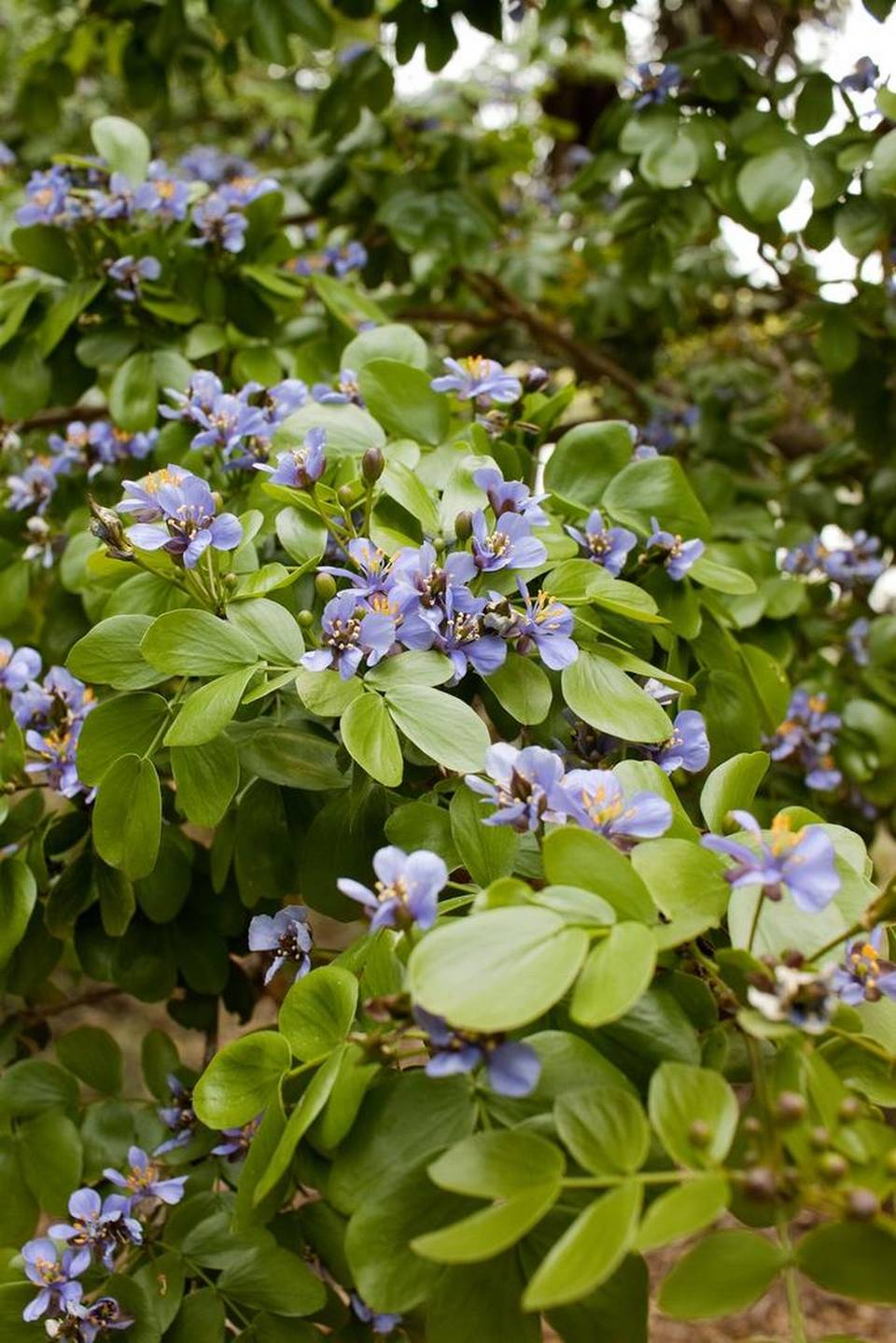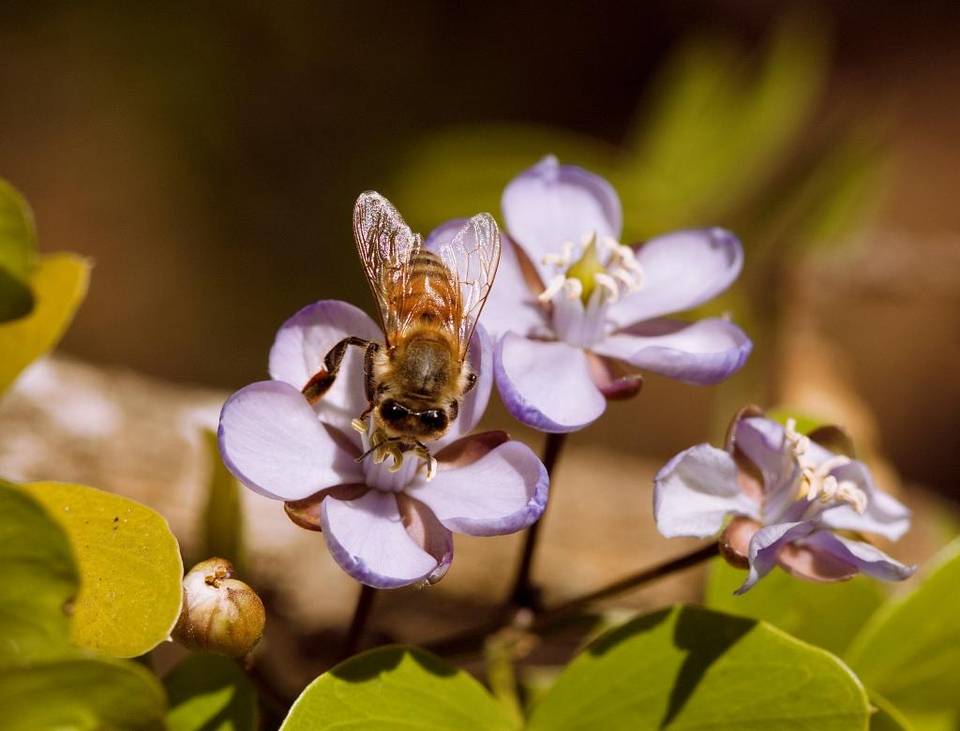‘Wood so dense it doesn’t float’

BY KENNETH SETZER
As published in the Miami Herald, 8/19/16.
The almost-mythical lignum vitae tree is surprisingly easy to grow. It suffers from a reputation as slow growing and hard to find, but this native is easily incorporated into landscaping and gardens.
Lignum vitae is known as “wood so dense it doesn’t float.” You may not want to build a boat with lignum vitae, it’s true, but it has served boat builders for centuries due to its hardness and resistance to decay and insects, perfect for parts of rigging needing great strength and durability. More recently lignum vitae was used for ship and submarine propeller bearings for the same qualities, plus the wood’s resinous nature provides its own lubrication.

Left: Leaf and seed capsule of native lignum vitae, Guaiacum sanctum. Right: the non-native Guaiacum officinale seeds and capsule.
While many hardwood trees are sometimes called lignum vitae, like the related verawood (Bulnesia arborea) we are concerned with Guaiacum officinale and Guaiacum sanctum. Ironwood is also a common name used for many different species.
Guaiacum officinale and Guaiacum sanctum are both tropical trees. G. officinale is native to the Caribbean (it’s the national flower of Jamaica), and parts of Central and South America. G. sanctum — or holywood — can also be called native to the Caribbean and parts of Central America, as well as the very south of South Florida — only Monroe County and Miami-Dade as an escaped ornamental. We are indeed at the northernmost range for quite a few tropical plants, like gumbo limbo.

Guaiacum sanctum in bloom
Growing either one is a worthwhile endeavor, as the non-native is not invasive. However, growing native is always nice. Now, how to tell the difference: The native G. sanctum generally has more leaflets growing per leaf than G. officinale. The bud at the base of the stem indicates a leaf. If the leaf is made of more than one leaf-like part it is called a compound leaf, and the smaller parts, leaflets.
As a generalization, then, the native lignum vitae has more leaflets per leaf, and they tend to be shorter than the non-native G. officinale.
If the trees have fruited, then it’s a bit more obvious. Here, the native G. sanctum shows a larger seed capsule, containing about 4 seeds; the non-native has a flatter capsule of 2 seeds — generally. The capsules mature to a deep yellow and open to reveal seeds covered by a bright red coating called a sarcotesta, similar to pomegranate seeds.
Both species are evergreen, and flower profusely mostly in the spring and early summer with small, periwinkle to purple flowers with complementary yellow anthers — the part of a stamen that contains the pollen. From a distance, they look like clouds of purple.
Give them lots of sun, and once established they tolerate wind, drought, and even salt so you can grow lignum vitae by the sea. Kind of poetic, considering how much the wood has given to ocean travel. Even the 18th century chronometers used to determine longitude at sea owe their success in part to lignum vitae gears, which are not so easily warped by humidity or temperature changes.

The flowers also support bees and other pollinators.
My own G. sanctum was grown from seed and planted when it was about 8 inches tall. I had to cordon off the spindly little thing with bricks so no one would think it a weed. In only a couple years, it’s grown to nearly 7 feet! It’s growing in my front yard with a midday and afternoon exposure, so that is a lot of sun. They can get to about 30 feet tall, though most seem to be about 15 to 20, and can be pruned to maintain a narrower profile.
If you want to see lignum vitae, Fairchild has both species in profusion. Or, you could paddle out to Lignumvitae Key Botanical State Park. But since this tree — listed as endangered by the state — tolerates a wide range of soils and other conditions, why not just plant a couple of your own?
